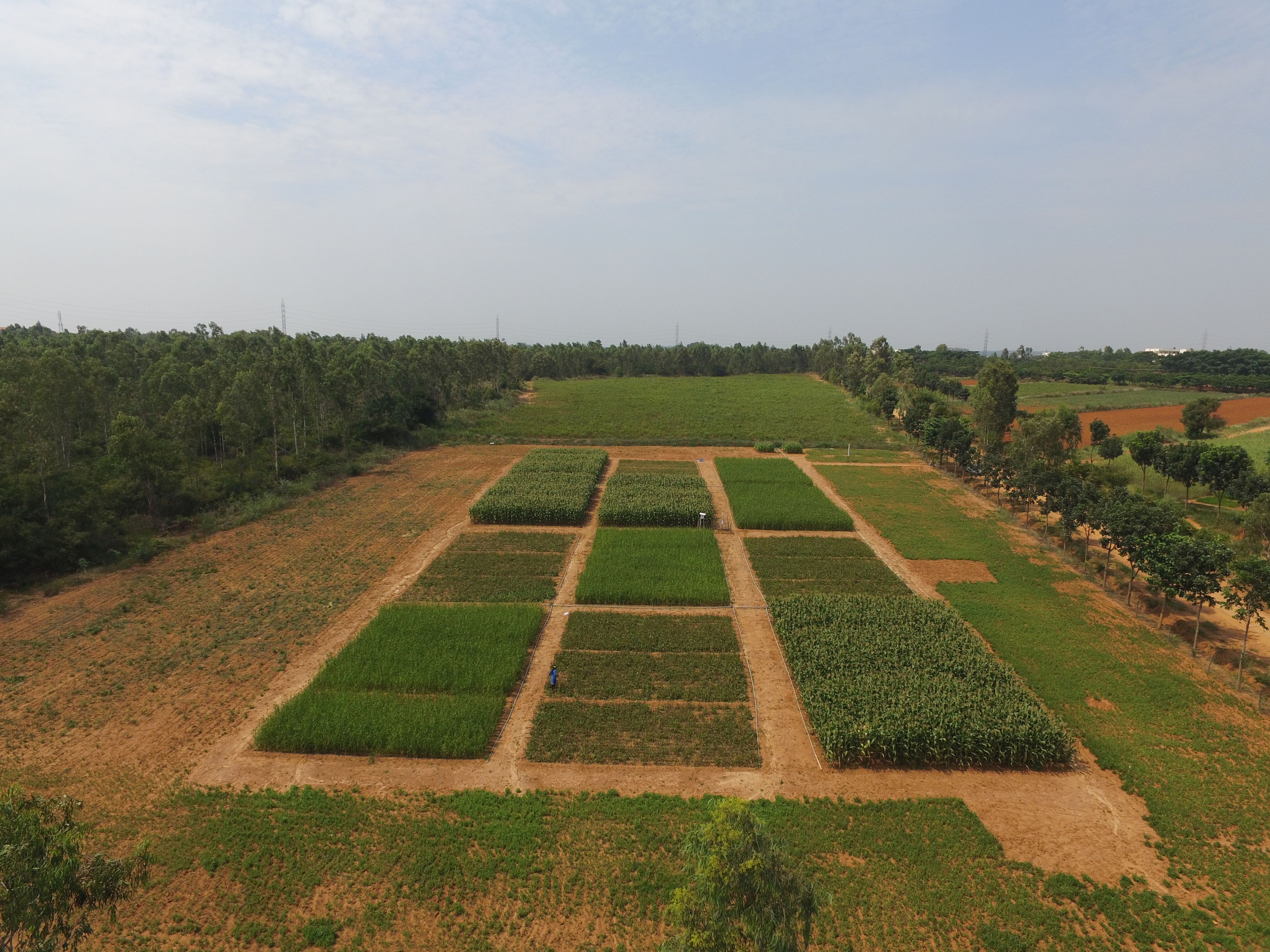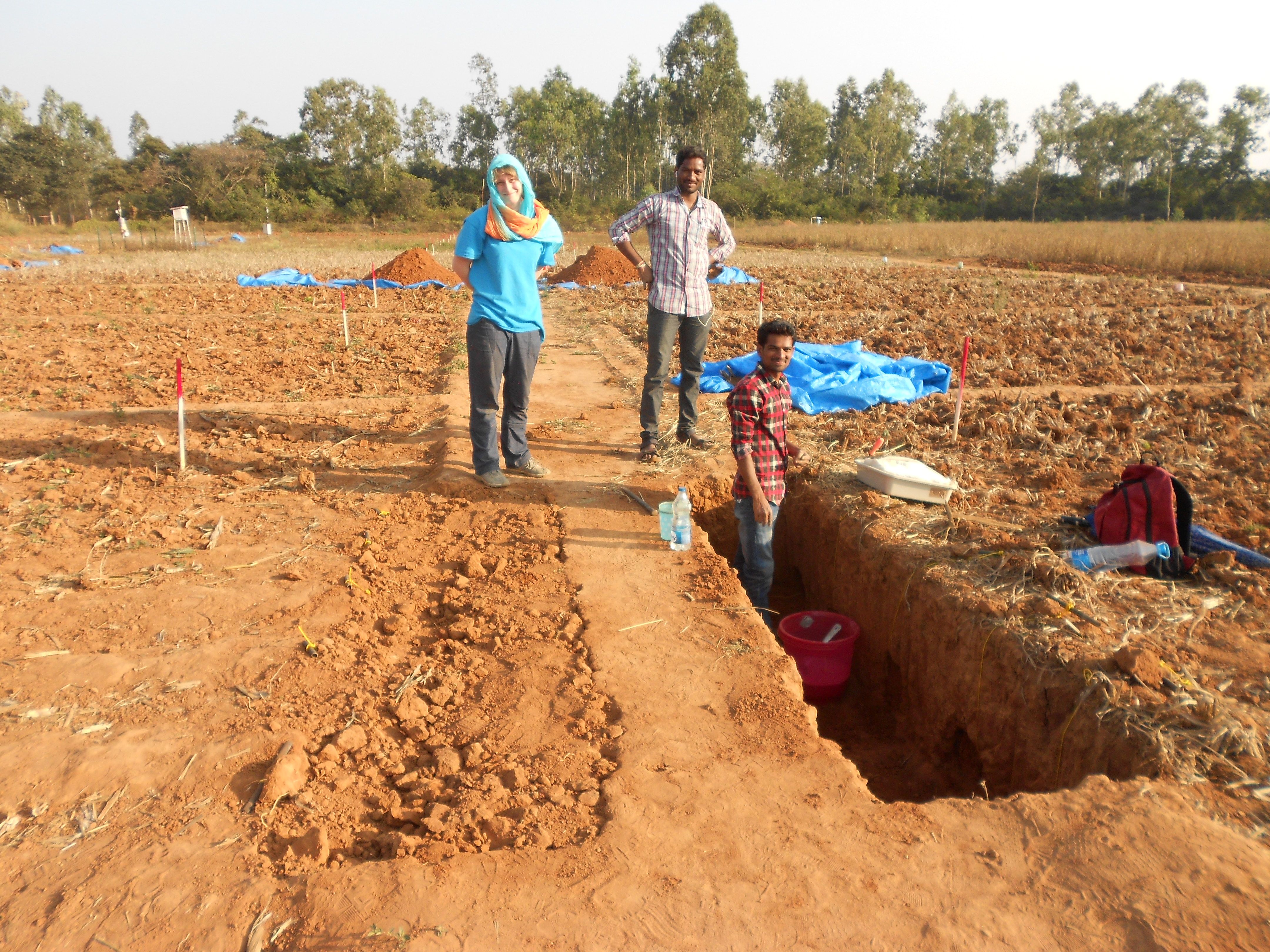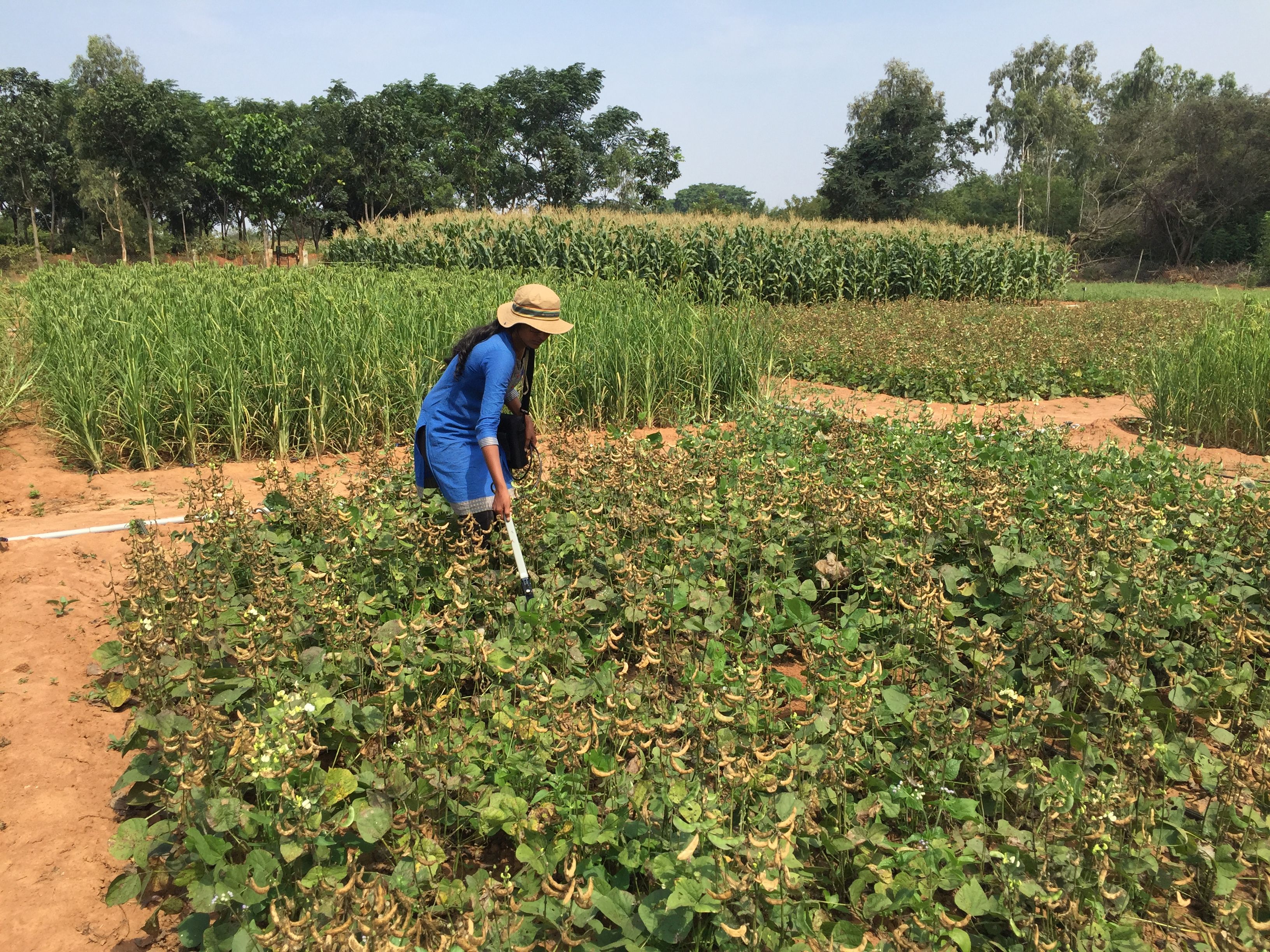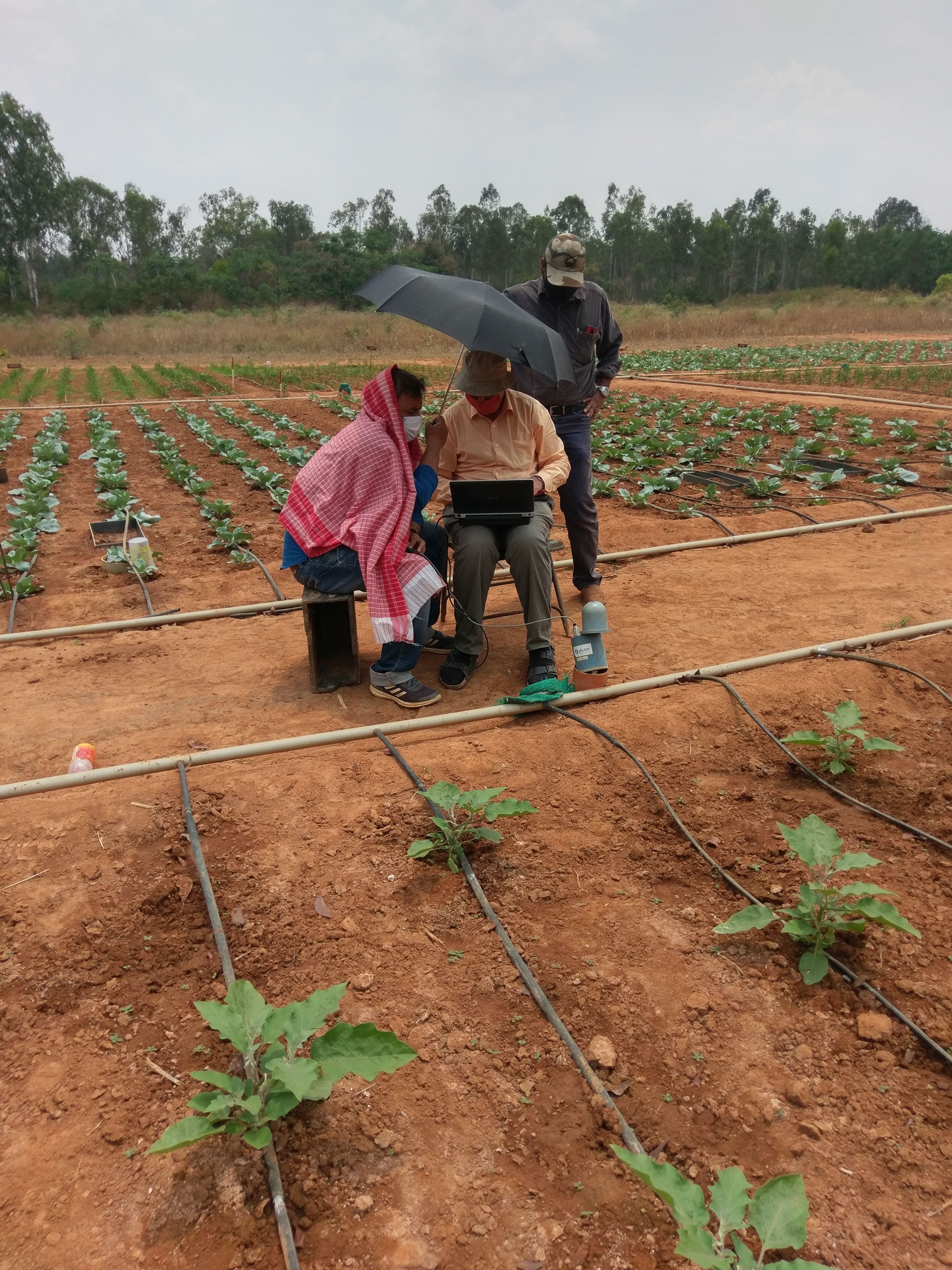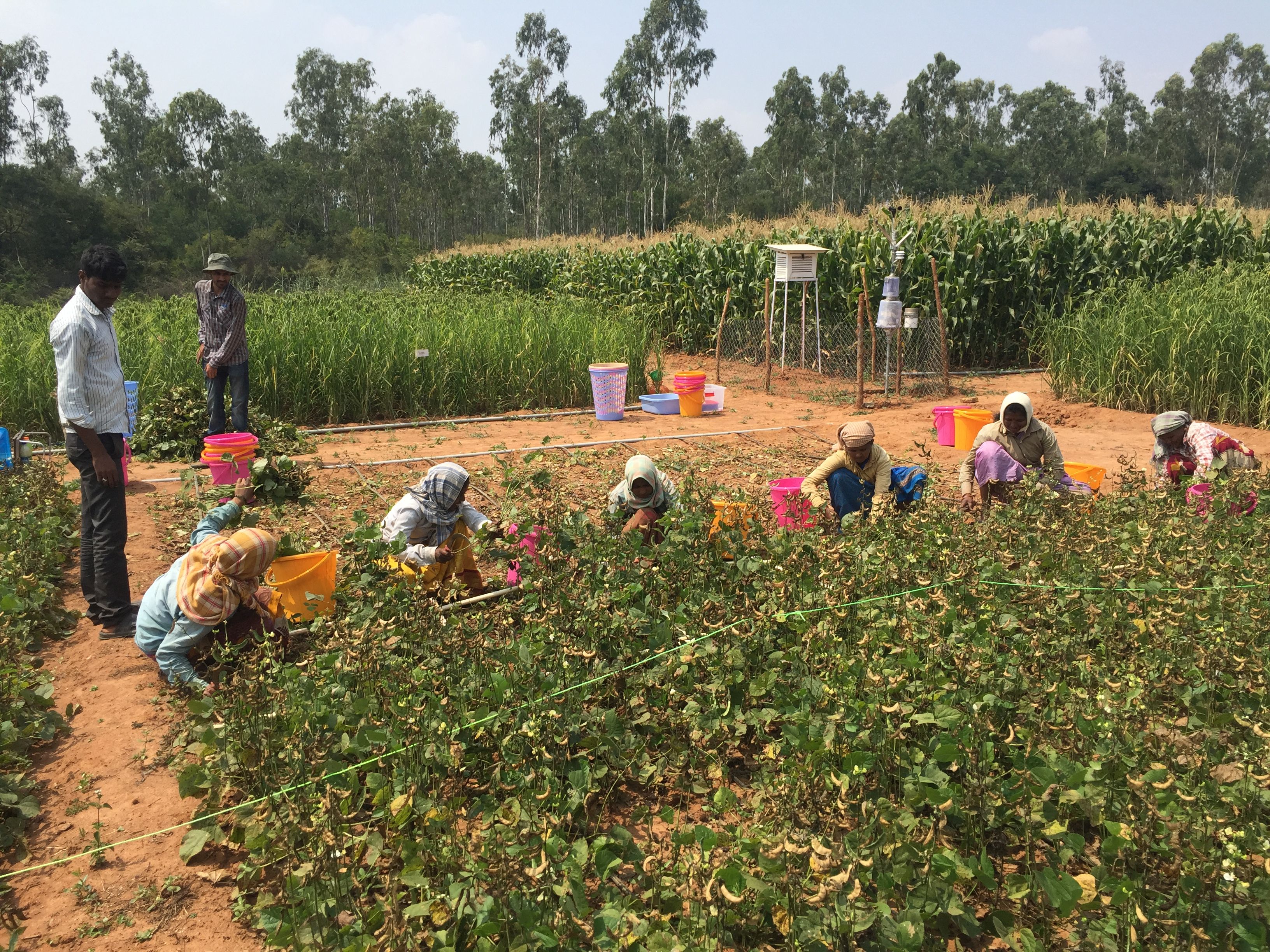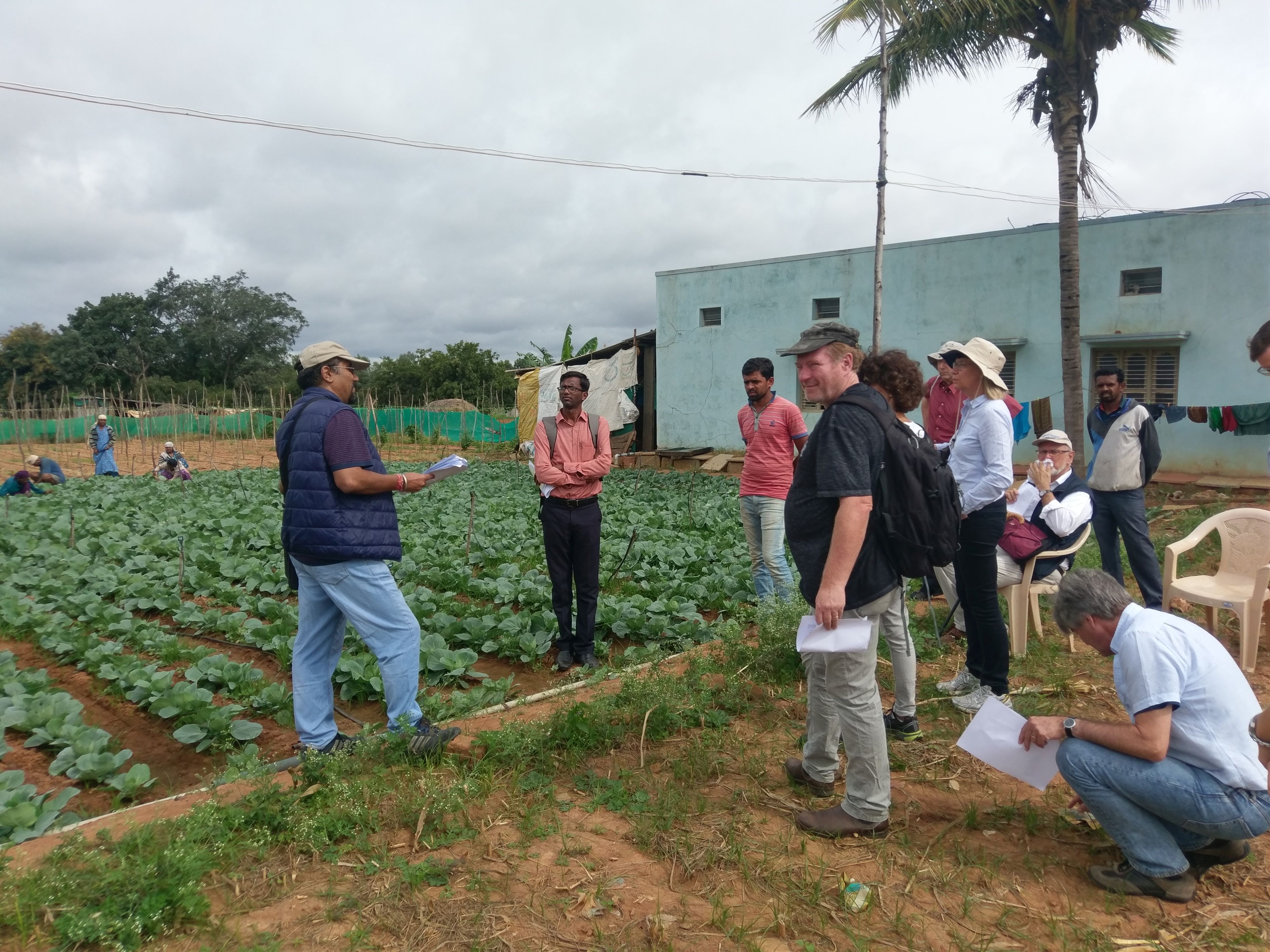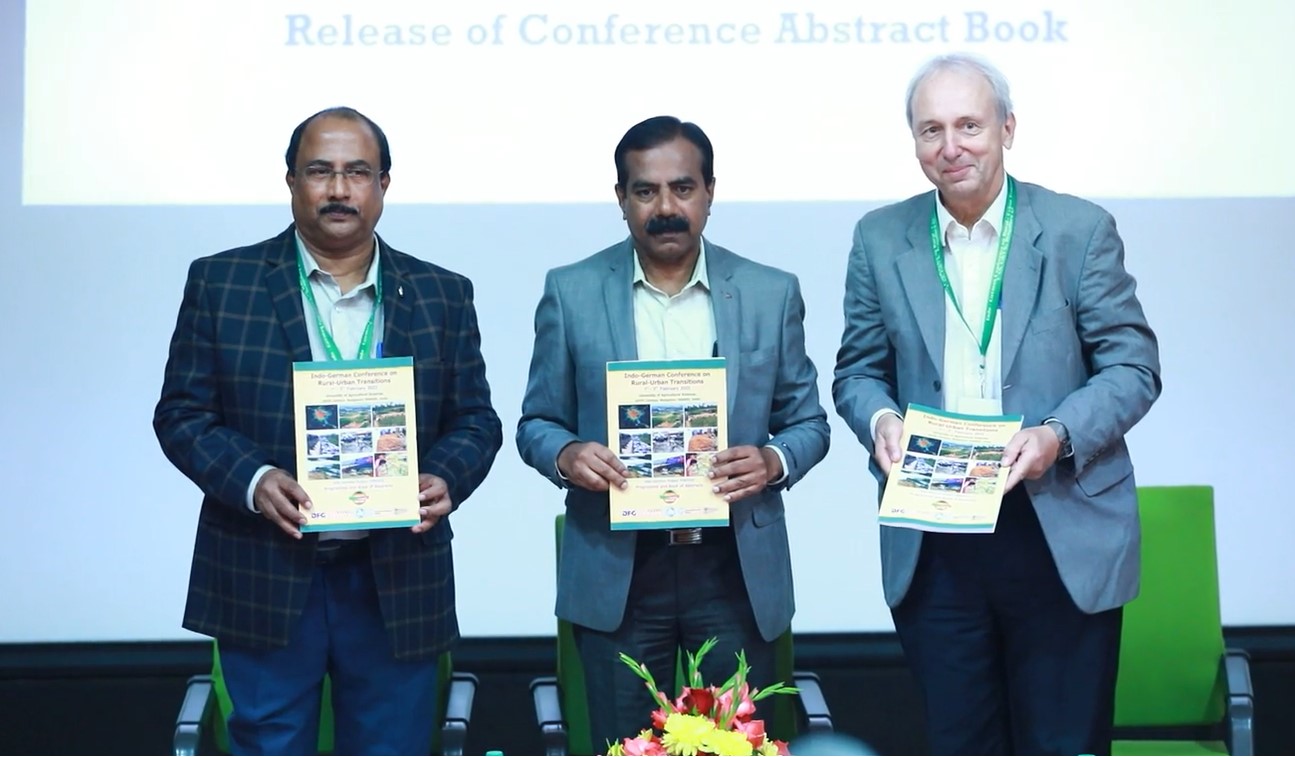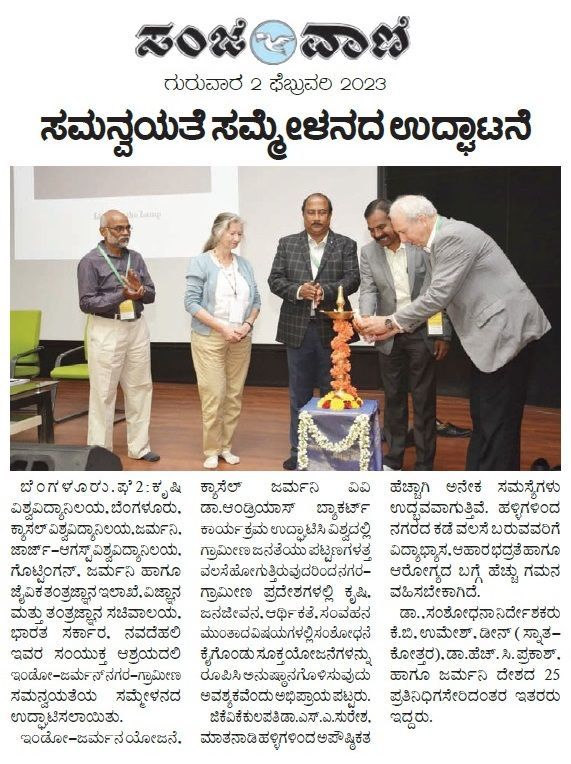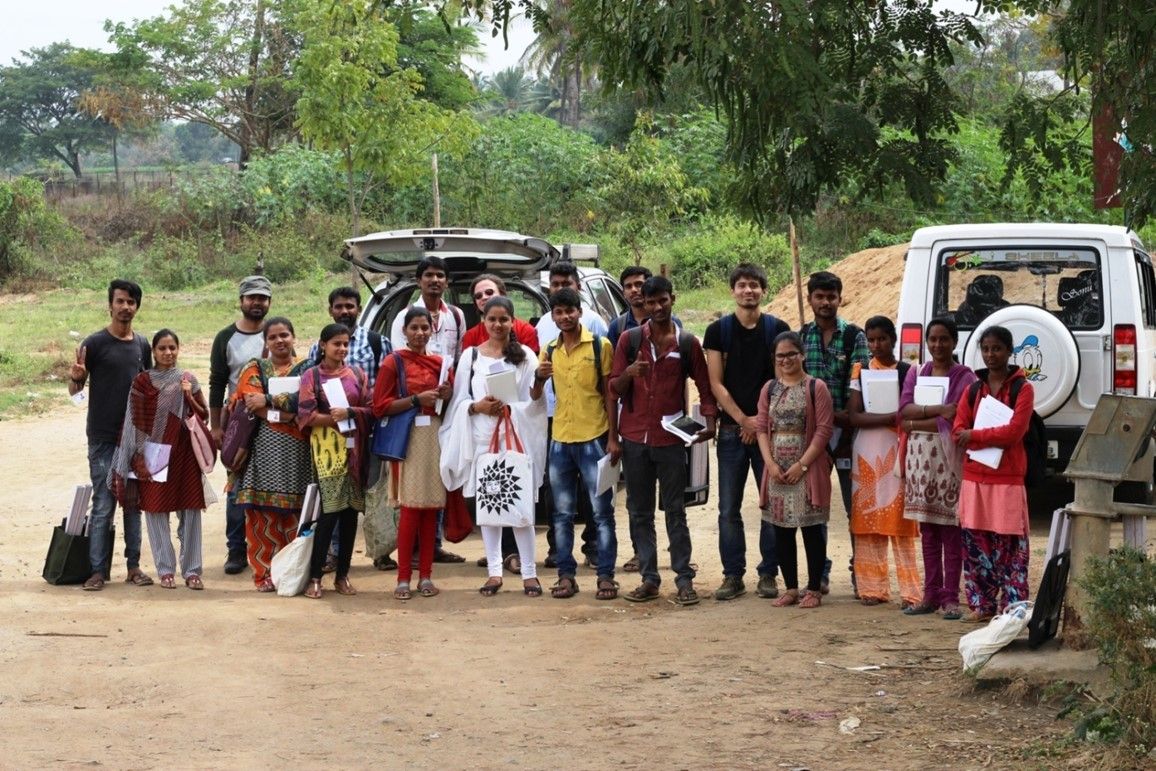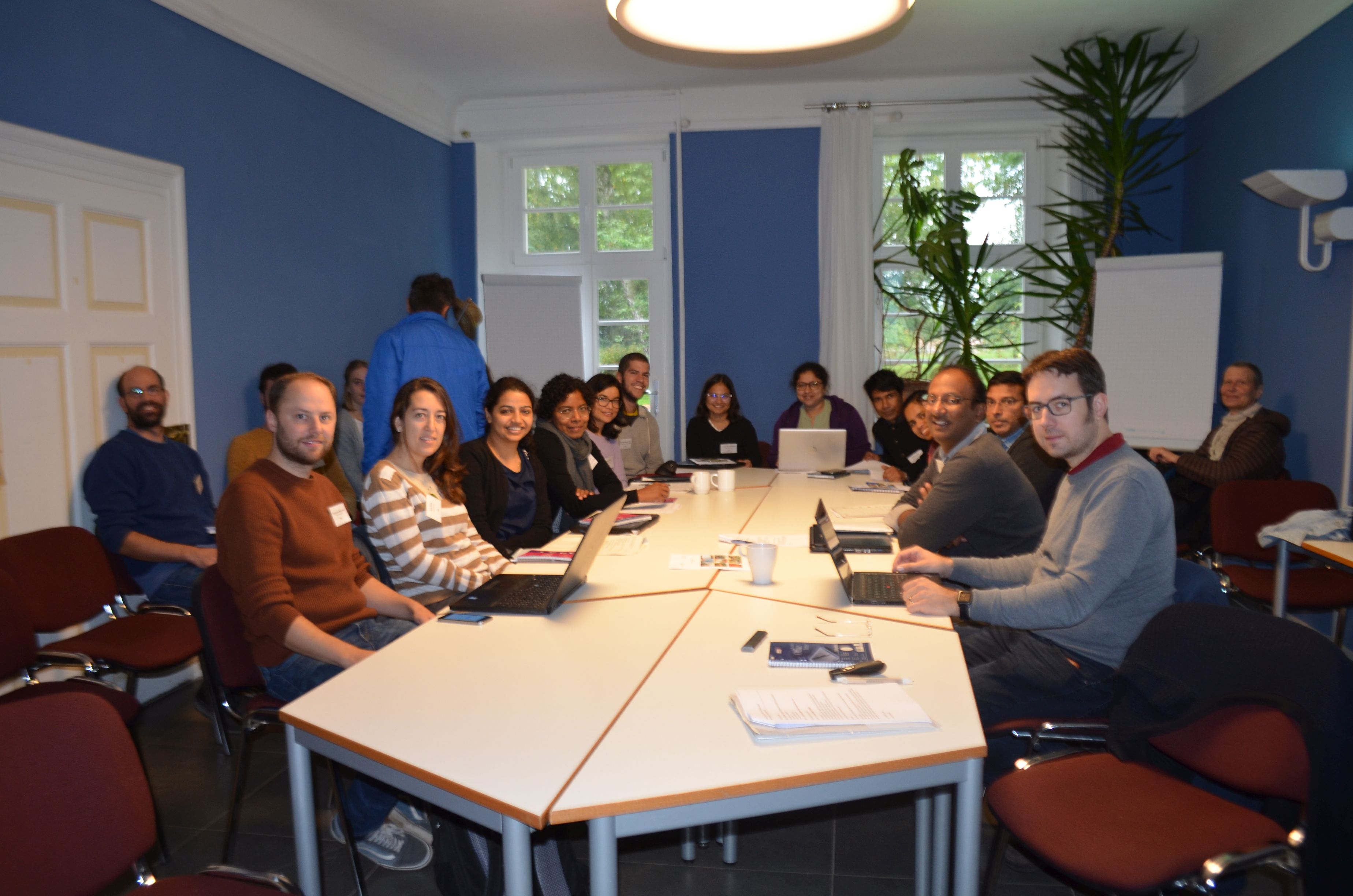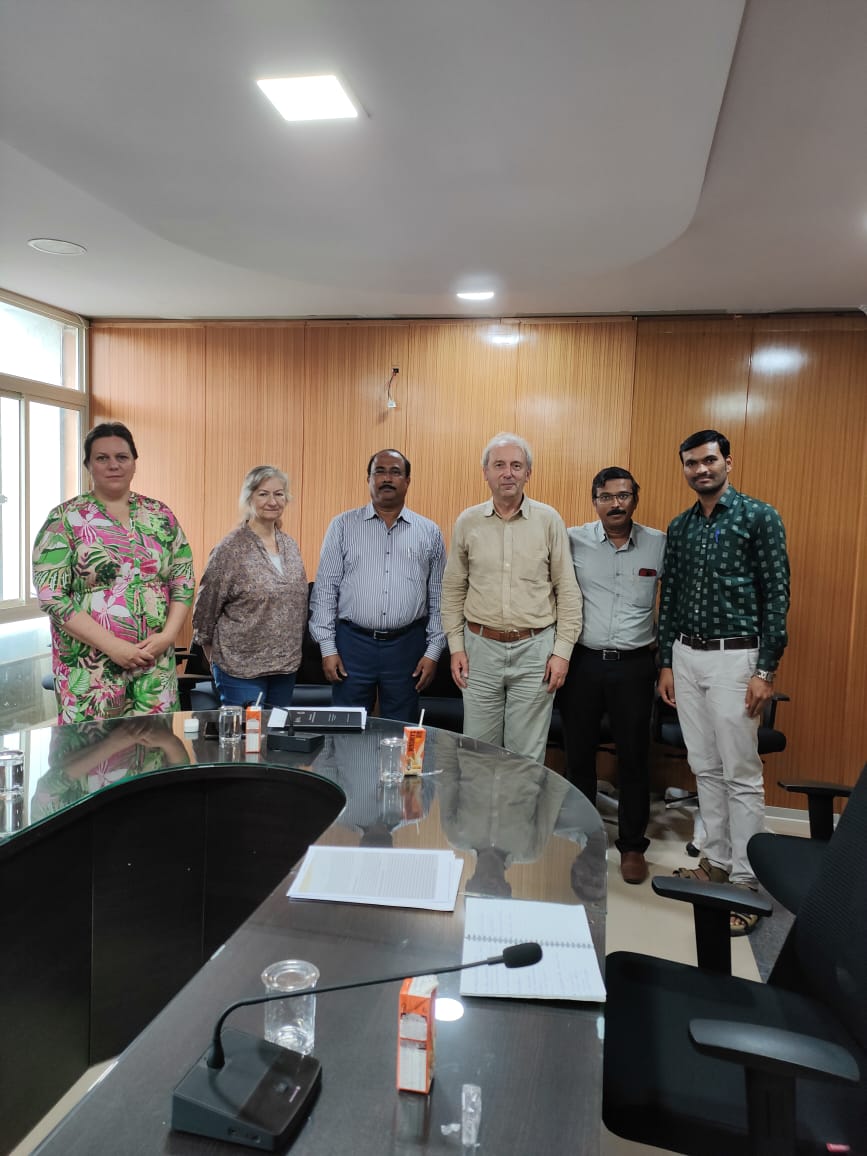Indo-German research highlights – Research Unit FOR2432
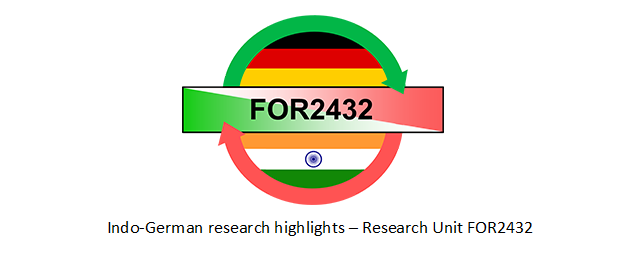
(22.11.23) A research unit in Agricultural Studies highlighting Indo-German Collaboration. Prof. Bürkert (University of Kassel), Prof. von Cramon-Taubadel (University of Göttingen) and Prof. K.B. Umesh (UASB Bangalore) could prove, that excellent research can be accomplished by coordinated research projects between Indian and German researchers. The projects were co-funded by DFG and the Indian Department of Biotechnology (DBT).

- Universität Kassel - Prof. Dr. Andreas Bürkert (Head of Section(externer Link)
- DFG - GEPRIS - Professor Dr. Andreas Bürker(externer Link)
- Georg-August-Universität Göttingen - Prof. Dr. Stephan v. Cramon-Taubade(externer Link)
- DFG - GEPRIS - Professor Dr. Stephan von Cramon-Taubade(externer Link)
- University of Agricultural Sciences, Bangalore - Professor Dr. K.B. Umes(externer Link)
- DFG - GEPRIS - Professor Dr. K.B. Umes(externer Link)
1) Could you describe your joint project’s objective in one or two sentences?
Urbanisation is one of the globally most pressing challenges to human societies as well as to the planetary environment. It triggers changes in land and resource use, in production and consumption practices and in societal and economic conditions. FOR2432 chose the metropolitan region of Bengaluru in Southern India as a hotspot where these processes are so dynamic, that it can be considered an “in situ laboratory”, and set out to analyse rural-urban transitions by an interdisciplinary, social-ecological systems approach. Our hypotheses-driven research programme integrates projects from various agricultural production sciences, (agro-)ecology, agricultural economics and human geography. Empirical approaches range from the field scale (with agronomic factorial on-station experiments) to the metropolitan region using satellite-borne remote sensing.
2) What about the (hoped for / expected) results? Why are they interesting and what excites you about this?
In the course of our project, which started in 2016 and will close by the end of 2023, we collected detailed data, focusing on two transects across the rural-urban interface. Our initial expectation was that these transects reflect a gradient with urban, transitional and rural areas, each with its typical properties.
It was most surprising, that although the transects stretched out 50 km from the urban (built-up) periphery, even at their distant end with apparently plain agricultural landscapes the livelihood portfolios of the resident people, their attitudes and cultivation practices were markedly shaped by typically urban factors. On the other hand, rural elements such as keeping dairy cattle (their total population in Bengaluru is estimated up to 60,000 animals) for urban milk consumers or engaging in urban gardening were encountered all along the transects, even in the very city center.
We were able to show that agricultural intensification throughout Bengaluru’s metropolitan region strains soils, groundwater resources and water quality. Within the transects, differences between designated urban, transitional and rural areas were detectable in many biophysical and socio-economic features, such as landscape composition and cropping patterns, bird, insect and floral diversity or the adoption of sustainable agricultural practices. The transitional area often had unique and sometimes the most diverse combinations of properties. Gradual differences along the transect became evident when averaging many observations within the three areas, but analysis at higher resolution allowed us to identify hotspots of transformational change and polycentric patterns of urbanization around subcenters in the rural-urban interface.
A survey of more than 1200 households revealed that with urbanisation peoples’ diets become more diverse, but at the same time, the “double burden of malnutrition” (that is the co-presence of under- and over-nutrition) prevailed throughout, and nutritional outcomes depended on complex interactions of various drivers. Consumption patterns in general followed the typical “westernising” nutrition transition while the affluent middle class tended to value traditional diets and organic food products.
Bundling our interdisciplinary research in two common transects was helpful for the mutual contextualization of our results and allowed us to gain comprehensive insights into multiple transition processes going on at the same time and linked to each other. This kind of understanding is highly relevant for the people living in the rural-urban interface and the institutions governing these spaces.
Aerial view of the factorial field experiment at GKVK. Irrigated Experiment with Kharif crops maize, finger millet, lablab.
© A. Bürkert
3) Tell us about how the Indian and German teams worked (and maybe still work) together: what are each side’s tasks, and how do they hang together?
We had a rather unique setup with well-defined partnerships at the sub-project level and thoroughly coordinated work programmes across all participating sub-projects based on a co-funding scheme between DFG (Germany) and DBT (India). Our teams collaborated closely in the fieldwork, such as the agronomic field experiments, the household survey and the ecological assessments. We exchanged our results in regular meetings and informed each other by sharing protocols and reports. The joint evaluation of results led to a good number of solid Indo-German publications in international peer-reviewed journals.
4) Would you tell us about how this collaboration started? How did you find out about each other, and about each other’s work? What happened then?
The initiative for this project came from the German side. Building on previous collaboration between the universities of Kassel and Göttingen, and in line with their research strategies, we had identified social-ecological transitions in the rural-urban interface as a highly relevant research topic, suitable in particular for long-term international collaboration with India. Back in 2011, we scouted various locations and potential partner institutions within India, and Bengaluru turned out to be our first choice. This was due not only to the dynamic transition processes going on in this region, but to a large extent to the highly qualified, highly motivated, and committed research partners that we found there. They were very welcoming in our first exploratory visits, were willing to take the risk of joining a lengthy proposal process without a guarantee for success, and they never gave up if there were intermediate hurdles or delays. Thus, we had already gone some way together when the project finally started in 2016, and ever since then, implementing the planned research strengthened our collaboration further.
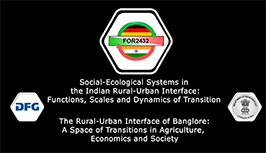
- Go to Film: Research Unit FOR243(externer Link)
5) Apart from the scientific results: are there interesting lessons you can share about the collaboration, the mix of research cultures, or about the project’s effects on you personally?
International collaboration, especially in a culturally and disciplinary diverse setting such as between India and Germany, is very exciting at the first sight, and at the second sight, requires a lot of patience and tolerance. We were lucky that our members, both at the level of the PIs and of the doctoral researchers, were able to face that challenge on both sides. The academic system in Germany and India may look quite similar at the surface, but there are subtle yet deep differences, for example in dealing with institutional hierarchies or time horizons of planning. There were, of course, conflicts along the way, but we always managed to solve them and continue our constructive and friendly collaboration. We learned a lot from each other and are thankful for the mutual forgiveness and sensitivity.
6) Any ideas or wishes about how international project funding should be (re-)organized?
For structural reasons, scientific collaboration with the Global South often suffers from dominance of the Northern/western partners. The co-funding by DFG and DBT in our project was a good attempt to level that playing ground with the goal of generating eye-level cooperation. However, it underestimated administrative hurdles between the two funding systems. In principle, however, equal participation of the international partners is key to successful and sustainable collaboration.
The text was written by Prof. A. Bürkert, Prof. S. von Cramon-Taubadel and Dr. E. Hoffmann and edited by Dr. Franziska Langer.
For further information please get in contact with us at: India@dfg.d(externer Link)
Note
For funding such international joint projects please get more information here:
